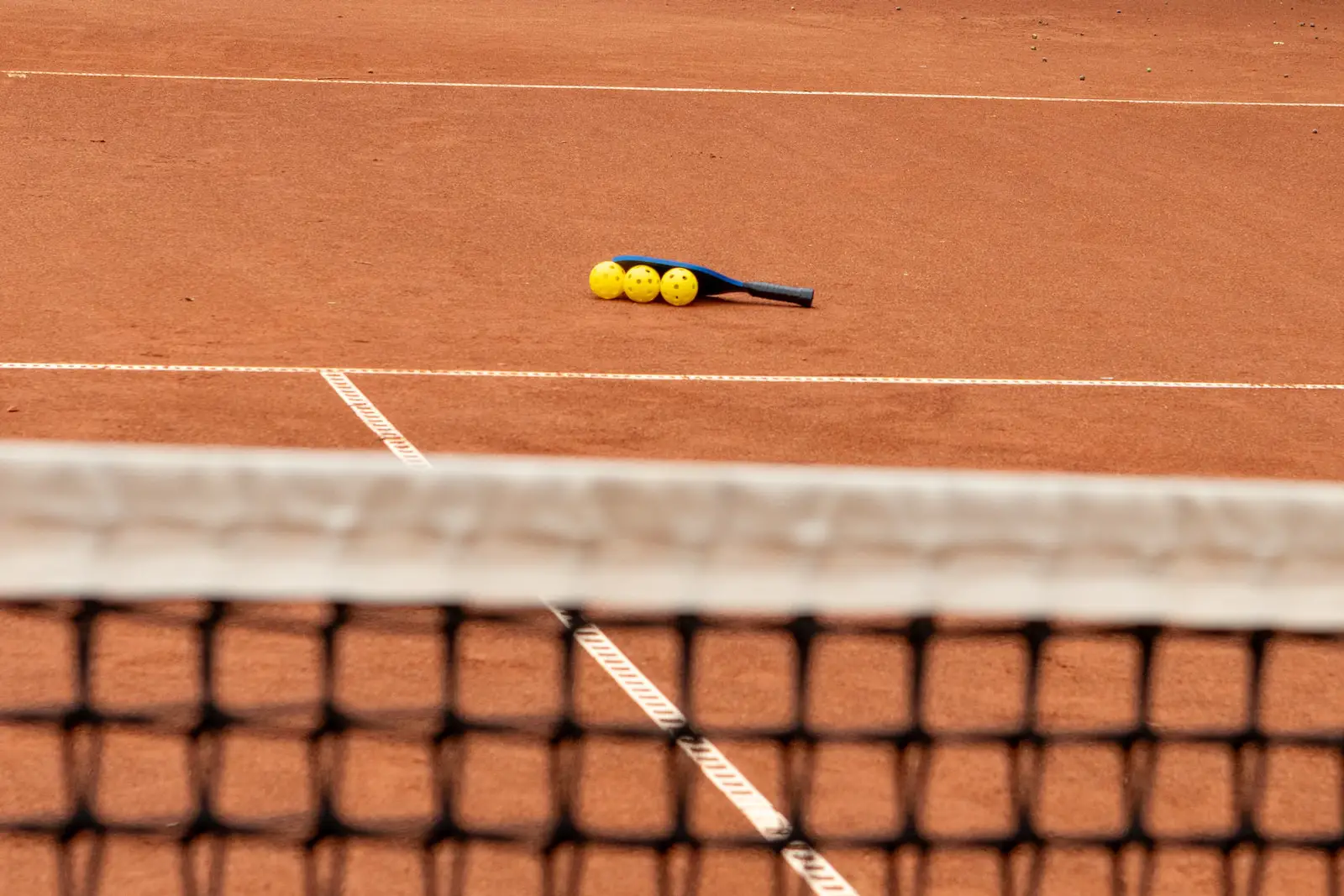If you’re new to the world of pickleball or have been playing for a while but are still a bit fuzzy on the rules, you’re in the right place. In this article, I’ll break down the scoring system and serving rules of this popular sport.
Pickleball, a game that combines elements of tennis, badminton, and table tennis, has a unique set of rules that can be a bit confusing at first. But don’t worry, I’ve got your back! I’ll explain how scoring works and the specific rules for serving that you’ll need to know to play like a pro.
So, whether you’re a beginner just starting out or an experienced player looking to brush up on your knowledge, keep reading. We’re about to dive into the exciting world of pickleball scoring and serving rules.
Understanding Pickleball Scoring
Pickleball scoring, to the uninitiated, can seem perplexing. But let’s break it down. The most common method used is rally scoring, which means a point can be scored by the serving or receiving team. Typically, the score is called out in a unique sequence: the serving team’s score first, followed by the receiving team’s. Games in pickleball usually go to 11, but have to be won by at least 2 points.
Before we dive deeper, here’s a quick rundown on how pickleball games can progress:
- The first server (Server A) continues to serve as long as their team keeps scoring points.
- After the first fault, the service switches to the partner (Server B).
- Anytime a rally is lost while Server B is serving, the serve moves to the opposing team.
Decoding these rules doesn’t have to be arduous. One point is scored at the end of each rally. However, only the serving team has the possibility to score.
Here’s a visual reference to simplify the concept:
| Server | Rally Outcome | Who Serves Next? | Who Scores a Point? |
|---|---|---|---|
| A | Win | A | A’s Team |
| A | Lose | B | – |
| B | Win | B | B’s Team |
| B | Lose | Opposing Team | – |
Pickleball’s scoring system promotes a certain rhythm to the game, rewarding strategy and skillful play. It requires all players to stay alert and engaged, which is one of the many reasons why this modern sport has won such a fond spot in the hearts of enthusiasts across the globe. This understanding of scoring is an effective step in fully appreciating and mastering this dynamic game.
Basic Rules for Serving in Pickleball
Understanding the serving rules is crucial to excel at any point-reliant game like Pickleball. So, let’s dive into the fundamentals of serving in this dynamic and exciting sport.
First off, the serve must be made underhand, with the paddle making contact with the ball below the waist level. It’s a rule that often catches newcomers by surprise. This requirement maintains the casual and accessible nature of Pickleball, making it a sport that can be enjoyed regardless of age or athletic prowess.
Always remember, the serve must be hit diagonally across the court, aiming for the service square opposite to your position. This is backed up by the essential rule that serves are not permitted to land in the ‘No-volley zone’, colloquially known as the ‘kitchen’. Serving directly into the kitchen is deemed a fault and costs valuable rally opportunities.
One more thing to keep in mind is that the serving rotation is somewhat unique in Pickleball. The serving team opens the game with a single serve; meaning only the server gets a chance to serve. They serve until they commit a fault. Then the receiving team gets a chance to serve, and both players get the chance to serve and score. This unique rule allows the receiving team’s server and their partner a chance to serve, thereby potentially scoring before the ball changes hands.
While rallying, a player may serve from anywhere behind their baseline. Simple, isn’t it? However, upon fault, the server’s position switches between the right and left side. Maintaining situational awareness is vital in keeping track of your serving spot. This shifting nature of service positioning is another intriguing aspect of this multidimensional sport.
And lastly, the ball must be served off the bounce, meaning it’s not permitted to catch or cradle the ball in your paddle. This distinctive serving style further separates pickleball from its racquet relatives and adds an extra layer of challenge and excitement.
How is Pickleball Scored?
Understanding the mechanics of scorekeeping in pickleball is not as difficult as it may seem at first glance. One key takeaway from the present scoring system in this sport is that only the serving team can actually score points. This is quite unlike some other sports you may be familiar with.
In practice, this scoring rule adds an extra layer of strategic gameplay. If I’m on the serving team, every strong serve could potentially notch up my team’s score. But if I’m on the receiving end, I have to effectively counter the serve and win the rally to gain the advantage of service.
In rally scoring, the team that wins the rally—regardless of being the serving or receiving team—gets a point. However, in traditional scoring, which is predominantly employed in pickleball, only the serving team gets the chance to score.
The switch in service takes place after the first fault is committed by the serving team. The other team member then gets the opportunity to serve. If they also commit a fault, the opposing team gets the serve. This is a two serves system—and it’s one thing that makes pickleball unique from similar sports.
It’s also important to remember the sequence or order of serving in a pickleball match. In a doubles match, the serving team dictates the sequence. For example, let’s say Player A and Player B are on the serving team. Player A serves first. If a fault is committed or a rally is lost, Player B gets to serve next. After Player B loses a rally or commits a fault, the serve moves to the opposing team.
One point to note is that while the game starts at zero, the opening server in a doubles match only gets one chance to serve before it switches to the opposing team. After it switches, the two-serves system continues until the end of the match.
Serving Rules for Pickleball
If you’re new to Pickleball, you might be wondering about the rules surrounding serving. Unlike traditional sports like tennis or badminton, Pickleball’s serving rules aren’t intuitive, and they require some learning.
As I previously mentioned, only the serving team can score points. This unique aspect of the game enhances strategic gameplay. The primary objective for the serving team isn’t just to get the ball over the net – but to do it in such a way that gives them an edge in scoring.
Please note, an important principle of Pickleball serving is that you must have correct foot positioning before initiating a serve. It should be an underhand serve, with the paddle contacting the ball under the waist level, and the server’s feet must be behind the baseline. Failure to adhere to these guidelines could cause a fault, leading to a service loss.
One unique aspect of serving in Pickleball is the rotation system used in doubles play. Just to jog your memory, the starting server gets only one chance to serve before the serve switches to their teammate. Interestingly, the serve continues to alternate between team members until a fault occurs, leading to a change of service to the opposing team. This unique serving rotation introduces an additional level of strategy to Pickleball because it’s not just about scoring points, but ensuring that your team retains serve as long as possible.
One more point to note is regarding scores. Uniquely, the game starts from zero, and the first server of a doubles match only gets one chance to serve before service switches to the opposing team.
Yes, Pickleball does have its quirks, but that’s what makes it intriguing and fun for both beginners and experienced players alike. The strategic gameplay, combined with unique rules around scoring and serving, make it a highly engaging sport requiring skill, strategy, and most importantly, good serving tactics. The next time you’re on the Pickleball court, remember these rules — they might just give you the edge you’re looking for.
Conclusion
So, we’ve unraveled the pickleball serve rules, from proper footwork to underhand serving, and the consequences of faults. We’ve also delved into the unique serving rotation in doubles play. Remember, the game kicks off at zero and the initial server in a doubles match gets a single serve opportunity before the baton passes to the rivals. It’s clear that pickleball isn’t just about hitting the ball; it’s about strategy and mastering the serve. Whether you’re a novice or a seasoned player, understanding and applying these rules can elevate your game. So, keep practicing, keep serving, and most importantly, enjoy the game!














0 Comments